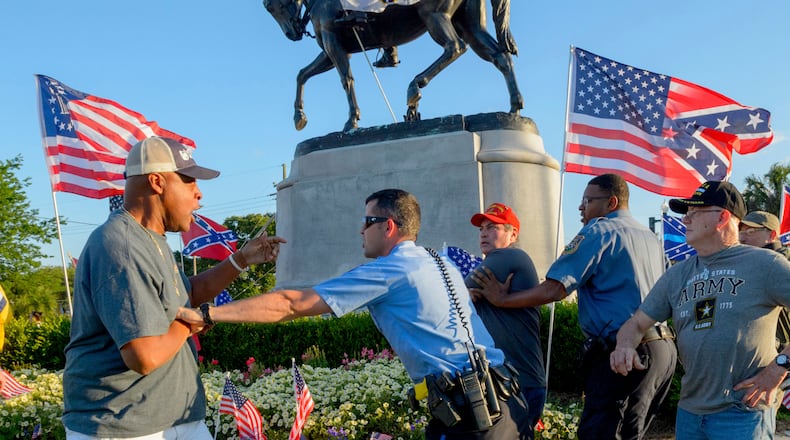As the noisy removal of four Confederate monuments in New Orleans pushes the issue back into national headlines, the Atlanta History Center remains committed to a grassroots conversation about Confederate memorials, veneration, and Southern history. Unfortunately these conversations are often dominated by advocates of deeply held positions who tend to talk past one another.
We view our institutional role in the ongoing controversy as encouraging a discussion that is inclusive, productive, and based on accurate history. Our approach seeks a middle ground for this dialogue, confronting the thorny problems of historical erasure on one hand and maintenance of an untenable status quo on the other.
In certain respects, Confederate monuments tell us more about the era in which they were erected than the subject they attempt to memorialize.
Some early monuments, erected soon after the war, conveyed a sense of Southern mourning and loss. They were dedicated to deceased soldiers, funereal in design, and often placed in cemeteries.
Later monuments (the overwhelming majority, in fact) are the product of an era defined by Jim Crow laws and the Lost Cause ideology, which reinforced and affirmed a white supremacist perspective and an inaccurate, mythologized history of the Civil War. These are the subjects of the present controversy. Among other things, the Lost Cause doctrine ignores the reality that preserving slavery was the impetus for secession and that the defeat of the Confederacy meant freedom for 40 percent of Southerners (3.9 million previously enslaved people).
By vindicating Lost Cause beliefs, these monuments reinforced the white supremacist power structure that the Confederacy and Jim Crow sought to perpetuate. The monuments provide tangible evidence of Jim Crow and the 20th century sentiments that supported that system. For many Americans, they are reminders of a dark past, provoking painful memories.
Is an imposing equestrian statue of a Confederate general situated in a town square an expression of personal loss? No, it is a clear statement about politics and race. By placing a general who fought to create a slaveholding republic on a pedestal, previous generations made a clear statement about whose lives mattered – and whose did not. While the history of these monuments is clear, though, this is still tough emotional ground where passions rule and logic often hides.
With that in mind, the Atlanta History Center’s Confederate monuments initiative, launched in 2015, does not advocate for or against removal of any monument – a decision we believe should be made locally in a way that respects all community members. Instead, we submit that when monuments are retained, they must be contextualized and transformed into educational tools, presenting them for what they are: symbols of white supremacy. In this way, we hope to shift what many consider to be a zero-sum, binary choice – retention or removal – into a broader public conversation about race, history, memory, and inclusivity.
We acknowledge that some experts disagree with the idea that adding historical context resolves the issue. Among them is National Book Award-winning historian Ibram X. Kendi, who argues, “Racism is not a teaching tool.” Agree or disagree, we believe in fostering conversation that encompasses all thoughtful perspectives.
To provide communities with a jumping-off point, we created a Confederate Monument Interpretation Guide, available at atlantahistorycenter.com. The guide includes a template with suggested language, accurate to the historical record, to put individual monuments in context. It also offers a compilation of up-to-date news stories and historical scholarship.
We were pleased to see this resource used to contextualize a prominent and highly controversial Confederate monument at the University of Mississippi in 2016. After a plaque added to the monument was criticized for its omissions, the university’s history department faculty pulled suggested language from our model to better express the monument’s connection to the Lost Cause narrative and Jim Crow era. Installed last year, the new panel informs readers that millions of enslaved people were freed as a result of the war and better explains the Lost Cause ideology.
Communities across the South and beyond are grappling with similar challenges. Even with New Orleans' removal of four monuments, hundreds of Confederate memorials dot the landscape. Simply put: This controversy is not going away anytime soon.
Having an honest conversation about a troubled past is not easy, especially when the history is so personal and close to home. A final decision on removing or retaining a monument that is made without robust community dialogue is an incomplete resolution, leaving wounds where there might be healing. But if we commit ourselves to thoughtful, informed conversation and take the time to listen to one another, we will be all the better for it.
About the Author




